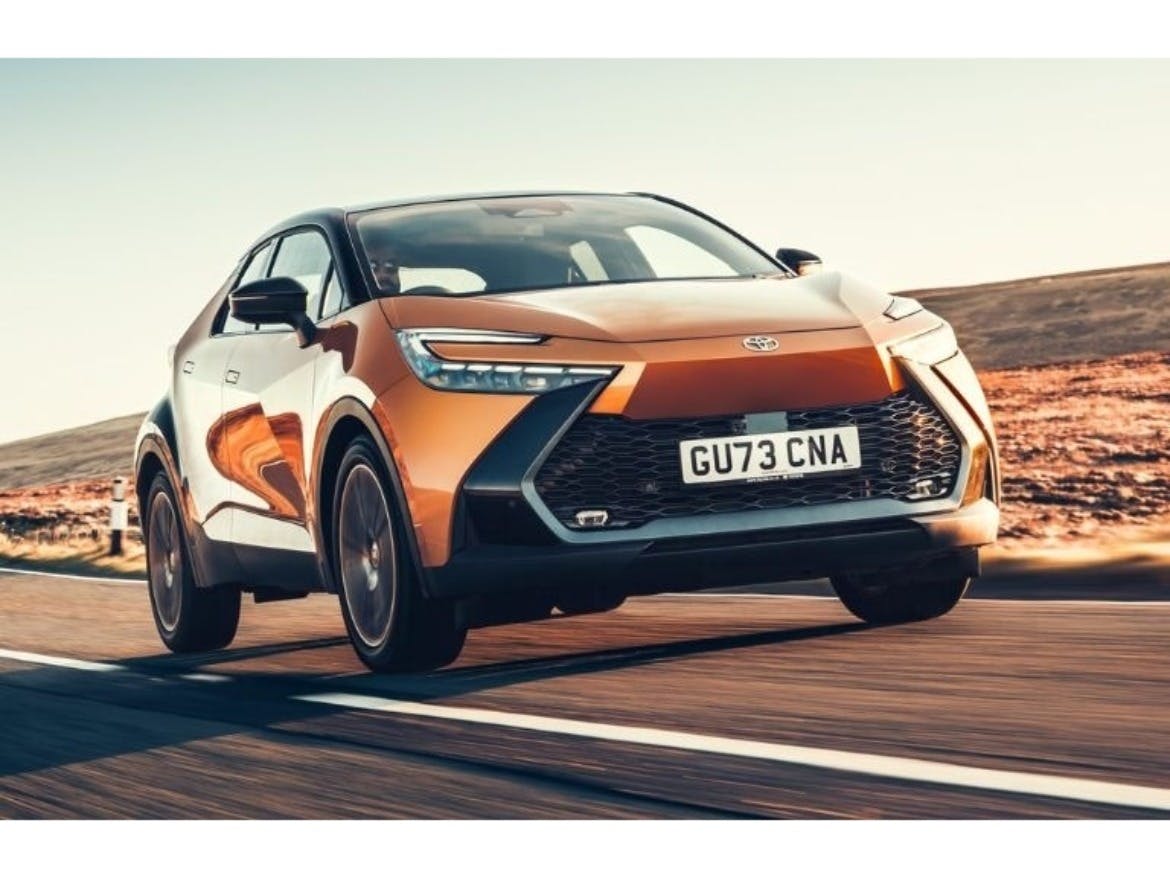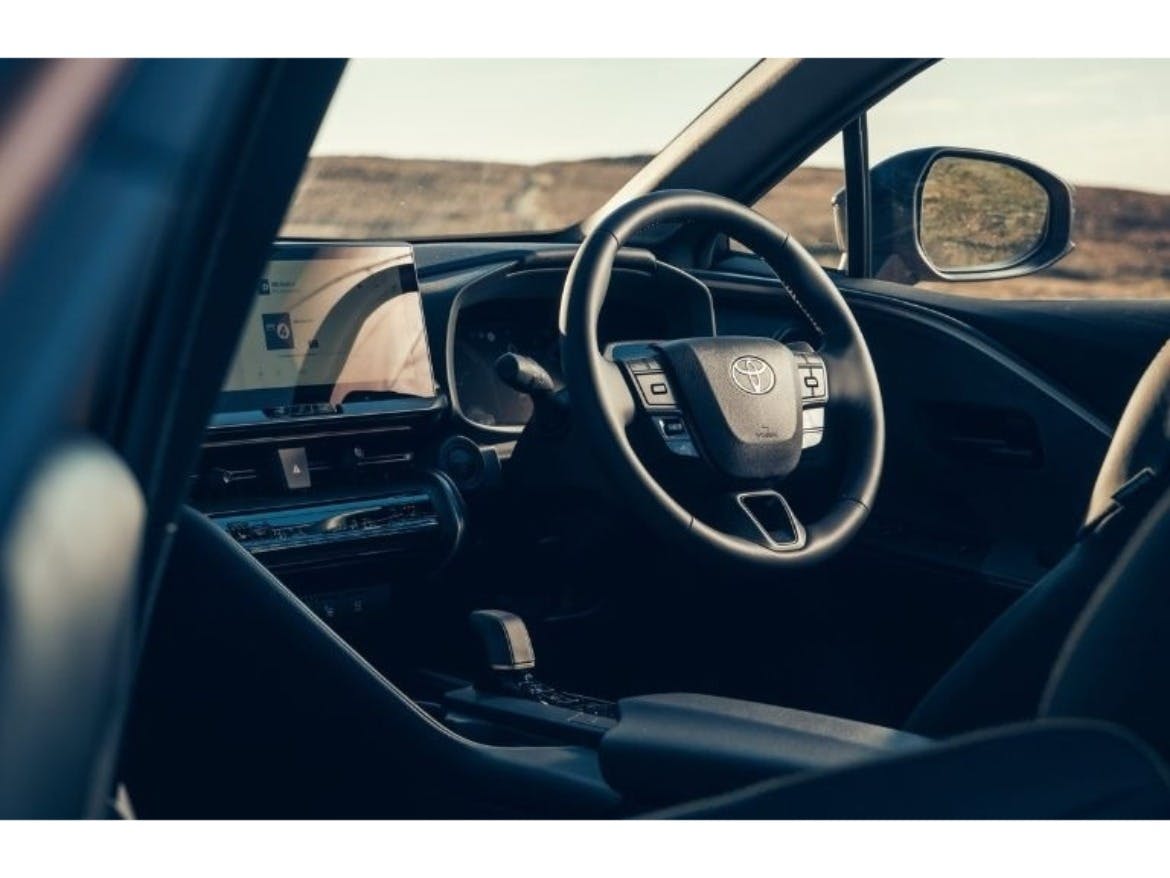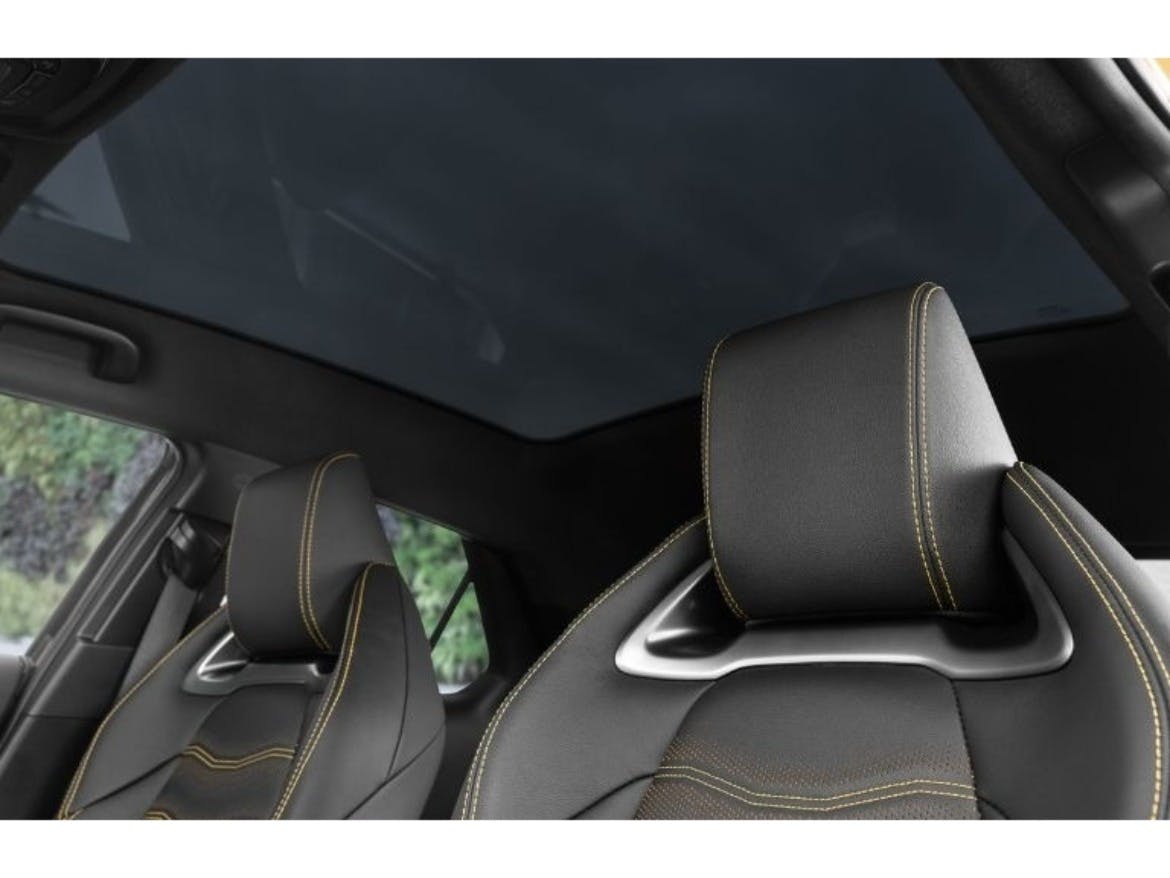
This second-generation Toyota C-HR takes the successful formula established by its predecessor and improves it in most key areas. Which means this small coupe crossover is now a little better to drive, slightly more practical and, arguably, much better to look at too. There's even 4WD and Plug-in Hybrid tech at the higher end of the range.
This month, these Toyota C Hr New models can be ordered through the Motability Scheme:




Search all the Toyota C-HR Motability Advance Payment prices and trim levels for April, May and June 2024, or read our guide to the latest Motability price changes and updates here.
Toyota C-HR Motability Advance Payment Offers
Toyota's been producing so-called 'European' cars for decades, but the C-HR, originally launched back in 2017, was the first one that really felt properly targeted at the preferences of our continent. This small coupe-crossover was built in Europe (just about - in Turkey), developed in its capital (Brussels) and sold like hot cakes, quickly becoming the brand's fourth best-selling model, with 59% of customers poached from other manufacturers. So, hopes were high for this, the second generation C-HR, introduced by Toyota in the Autumn of 2023.
Since the old car sold mainly on its appearance, this one's evolved styling needed to look sharp, keeping it at the fashionable end of the segment for small crossovers (a Volkswagen T-Roc or Taigo rival, rather than a T-Cross competitor, if that helps to pigeonhole it for you). Yet this time round, the designers have tried to balance those looks with more practical rear seat and boot space. Plus, the Hybrid engine range has been broadened with the addition of a Plug in variant to give this model line longevity in markets about to make the switch to full EVs. And the front-of-cabin experience is now better connected and more premium. Sounds promising. Let's take a closer look.
All the engineering headlines surrounding this second-generation C-HR are of a top variant that very few customers will choose. Having dismissed the notion of a PHEV version first time round, Toyota has now decided that it's a good idea after all, given the indecisiveness of European nations over the switch to EV. But the company's heart is still primarily in the more familiar self-charging Hybrid units that most will choose in this car; proper full-Hybrid powerplants that can (albeit briefly) run on battery power alone, rather than the far less effective mild hybrid tech you get in rivals like Ford's Puma.
The self-charging Hybrid engines in question are largely the same as the ones previously offered in the C-HR, though the entry-level 138bhp 1.8-litre unit has actually been changed quite a bit. The alternative 195bhp 2.0-litre powerplant is now matched with 4WD, another thing we were told the original C-HR didn't really need. That MK1 model wasn't as engaging to drive as its looks suggested it might be, which is something Toyota says it's worked on, introducing a wider track and tweaking multi-link rear suspension elements from the larger RAV4. As before, it all sits on the company's usual TNGA-C platform, borrowed from the Corolla. And Toyota says that as part of the development of this fifth generation Hybrid system, it's improved auto gearbox response too, though you shouldn't expect too much there.
We mentioned the new Plug-in Hybrid variant earlier. It mates the 2.0-litre engine used in the faster of the two standard models to a 161bhp electric motor powered by a 13.8kWh battery that, when fully charged, can offer an EV range of up to 41 miles. Only the front wheels are driven - with up to 220bhp, which allows 62mph to be dispatched in 7.3s en route to 112mph. To cope with the extra power (and weight), Toyota has added new twin-piston brakes and new ZF frequency-sensitive shock absorbers supposed to improve the ride over high-frequency bumps. There are three driving modes and you can alter the strength of regenerative braking right up to a 'B' setting that offers so much retardation off-throttle that you hardly ever need to use the brake pedal.



If you liked the edgily-styled original version of this model, it's likely that you'll also appreciate the visual efforts Toyota's made with its replacement. As before, dramatic lines, sharp bodywork creases and sculpted headlights catch the eye. Plus, the nose gets Toyota's latest 'hammerhead face', there are flush-fitting pop-out door handles and pricier trim levels get two-tone paintwork. A new pre-coloured resin finish for the bumpers also gives a two-tone vibe. Contrary to expectations, this MK2 model is a little smaller than its predecessor, 35mm shorter and sitting 15mm lower. It's 45mm wider though and has bigger wheels - up to 20-inches in size.
The cabin needed an uplift in quality - and it's been given it, courtesy of various recycled plastic fabrics, contrasting soft-touch surfaces and a pair of so-called 'sail panels' that stretch from the fascia top into the doors. Avoid base trim and a new 12.3-inch digital dial display features for the instruments and there's been an infotainment upgrade for a centre screen that's either 8.0 or 12.3 inches in size, depending on trim. You sit quite high, but it's not enough to alleviate the rather compromised rearward visibility, though this is better than it was previously.
You access the rear through conventionally-sited door handles (previously, they were embedded into the C-pillar). And once inside, it's still tight because the 2,640mm wheelbase length isn't any different from before. Legroom is fractionally better though and extra space for heads has been freed up by the fact that the optional panoramic glass roof no longer needs a shade. But rear seat visibility is still limited, and the sloping roof line restricts ceiling space. The boot's still restricted too, though at least it's not noticeably smaller than before: the seat back still splits 60:40.
Prices for this second-generation model start from just over £31,000. Mainstream trim levels at launch are the base 'Icon', mid-range 'Design' and top 'Excel'. The 2.0-litre Hybrid comes in 'GR Sport' and 'Premier Edition' guises.
All variants are pretty well equipped. Even base 'Icon' trim gets you 17-inch alloy wheels, a powered tailgate, an auto-dimming rear view mirror, cloud-based navigation, a wireless smartphone charging mat and 'Apple CarPlay' and 'Android Auto' smartphone-mirroring. Plus there's a very complete 'Toyota Safety Sense' camera safety package. Mid-range 'Design' trim builds on this with 18-inch alloy wheels, rear privacy glass and a parking sensor system with automatic brake function. There are heated seats and you get a 12.3-inch instrument display, along with a 12.3-inch 'Toyota Smart Connect+' central infotainment screen.
The top 'Excel' model has 19-inch alloys, bi-tone exterior paintwork, front sports seats with suede-effect upholstery, ambient interior lighting, a panoramic roof and a 360-degree panoramic view monitor. On the 2.0-litre model, the 'GR Sport' grade has 20-inch machined alloy wheels, a head-up display and a JBL premium audio system.
Self-charging full-Hybrid engines are still quite rare in the segment for small crossovers: only Kia's Niro and Hyundai's Kona can offer petrol/electric technology of that sort in this class and those models look pretty frumpy in comparison to this one. They'll be less efficient too, for a 1.8-litre Hybrid-powered C-HR can return well over 58mpg on the combined cycle and under 110g/km of CO2. For the 2.0-litre Hybrid, think around 50mpg and just over 120g/km of CO2.
For the PHEV variant, you're looking at up to 294mpg on the combined cycle and up to 19g/km, with an EV range of up to 41 miles; in the real world, it'd be more like 35 miles. You can select an EV mode or use a Hybrid setting that will work with the sat nav and uses Geofencing technology that will prioritise electric power in low-emission zones. The navigation system can also suggest a route that will take into account your state of charge and identify possible charging spots. In a C-HR PHEV, you can also adjust the strength of the regenerative braking. The 13.8kWh battery can use a 7kW charger for a home top-up that will take two and a half hours.
As before, almost everyone who chooses a C-HR will do so on the basis of the way it looks. But second time round, this car's appeal is more than skin deep. Toyota still thinks its target market is 30-something fashionistas, but the old car demonstrated a much broader customer base than that amongst more regular folk who will no longer have to make quite so many of the practical compromises demanded by the original model.
We can't imagine that too many of these people will want the cost (and extra weight) of the added PHEV flagship model; as it always did, the C-HR makes most sense in a nice level of spec fitted with the base 1.8-litre self-charging Hybrid engine and sold with a sensible price tag. In that form, we can see why you might want one. And if you do, you might be agreeably impressed by the cabin improvements Toyota has made here. If cars were bought on purely rational grounds, you still wouldn't choose one of these, but thankfully, they're not. The C-HR celebrates that. Which is exactly why it's been so successful and will continue to be.
People with a disability and carers who choose a new Toyota C-HR through Motability will receive a brand new car, delivered by a Motability Specialist at a local Toyota dealership, complete with insurance, servicing and maintenance, full breakdown assistance, replacement tyre cover, windscreen repair or replacement cover plus a mileage allowance of 60,000 miles over three years.